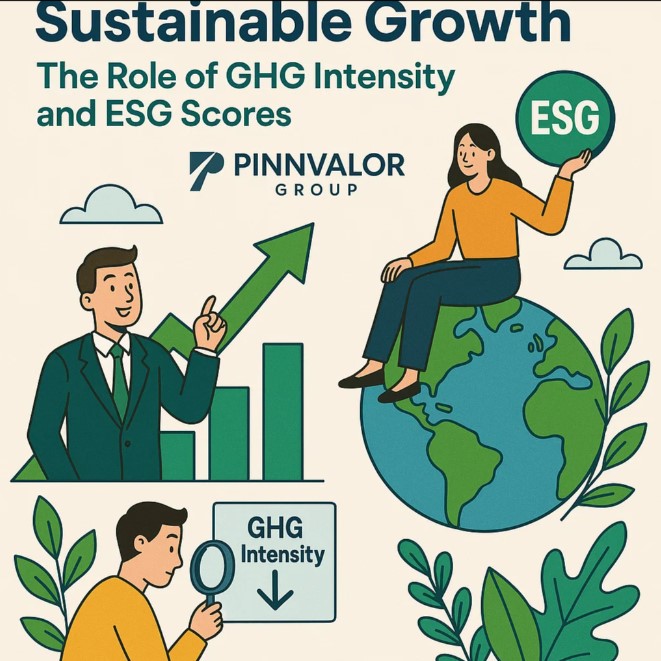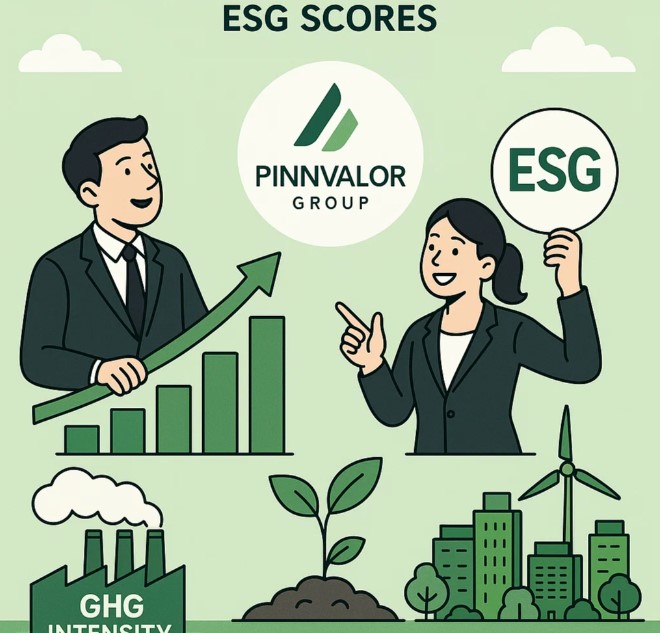
Driving Sustainable Growth: The Role of GHG Intensity and ESG Scores
In today’s business landscape, sustainability is no longer optional—it's a strategic imperative. Investors, regulators, customers, and employees are increasingly demanding transparency in how companies manage environmental, social, and governance (ESG) risks. Two critical metrics that help assess sustainability performance are Greenhouse Gas (GHG) Intensity and ESG Scores. Understanding and effectively managing these metrics not only enhances corporate reputation but also drives long-term growth.
Is your business leveraging GHG intensity and ESG scores to drive sustainable growth and investor confidence?
Sustainability is no longer optional; it’s a strategic imperative. GHG intensity and ESG scores guide businesses toward responsible growth, building trust with investors and stakeholders alike.
1. Understanding GHG Intensity
GHG intensity measures the amount of greenhouse gases a company emits relative to a specific business metric, such as revenue, production output, or employee count. Unlike absolute emissions, GHG intensity provides a normalized view, enabling meaningful comparisons across companies and industries of different sizes.
- Calculation: Typically, GHG intensity is calculated as total CO₂-equivalent emissions divided by revenue or production units.
- Purpose: It helps organizations track progress toward carbon reduction targets and identify areas for energy efficiency improvements.
- Business Impact: Lower GHG intensity demonstrates efficient resource utilization, reduces regulatory risk, and can attract sustainability-conscious investors.
2. Decoding ESG Scores
ESG scores provide a holistic measure of a company’s performance across three pillars: environmental, social, and governance. These scores are often provided by third-party rating agencies and are used by investors to evaluate a company's sustainability practices and risk exposure.
- Environmental: Includes metrics such as carbon emissions, energy efficiency, water usage, and waste management.
- Social: Covers workforce diversity, labor practices, community engagement, and human rights initiatives.
- Governance: Examines board structure, executive compensation, transparency, and ethical business conduct.
High ESG scores signal responsible business practices and strong risk management, which can lead to better access to capital, improved stakeholder trust, and enhanced market competitiveness.

3. Why These Metrics Matter for Sustainable Growth
Integrating GHG intensity and ESG scores into business strategy is key for sustainable growth:
- Informed Decision-Making: Data-driven insights help management prioritize initiatives that reduce environmental impact while improving social and governance outcomes.
- Investor Confidence: ESG-aligned companies are more likely to attract long-term investors who value sustainability performance.
- Regulatory Compliance: Many jurisdictions are increasingly mandating ESG disclosures, making proactive tracking essential.
- Competitive Advantage: Companies demonstrating strong ESG performance often enjoy better brand loyalty, employee engagement, and operational efficiency.
4. Strategies to Improve GHG Intensity and ESG Scores
- Implement energy-efficient technologies and optimize production processes.
- Set clear, measurable carbon reduction targets aligned with international standards.
- Enhance corporate governance through transparency, ethical practices, and robust risk management.
- Engage employees and communities in sustainability initiatives to strengthen social performance.
- Regularly monitor, report, and improve ESG metrics to meet evolving stakeholder expectations.
Conclusion
GHG intensity and ESG scores are more than just metrics—they are powerful tools that guide companies toward sustainable growth. By actively managing these indicators, businesses can reduce environmental impact, strengthen stakeholder trust, and secure long-term value. In a world increasingly focused on sustainability, organizations that embrace these measures position themselves as leaders in responsible and profitable growth.
